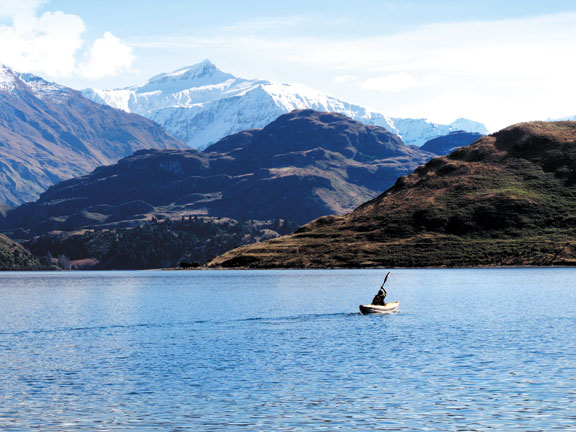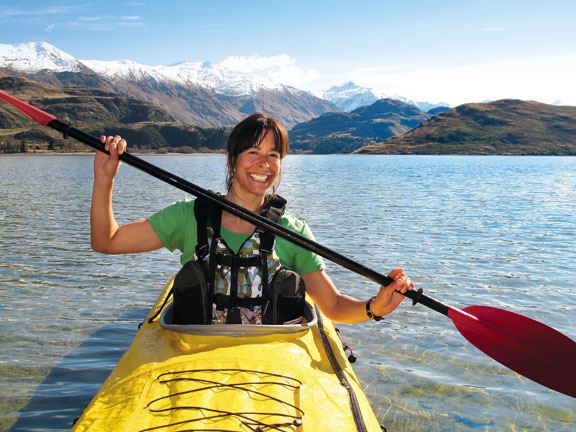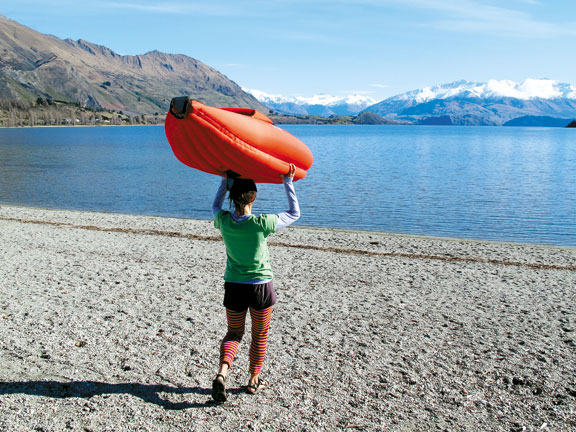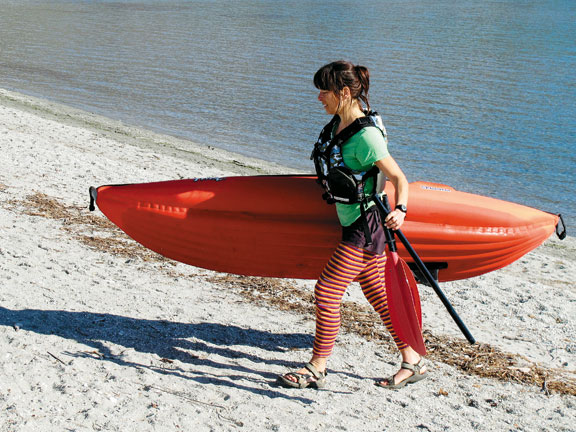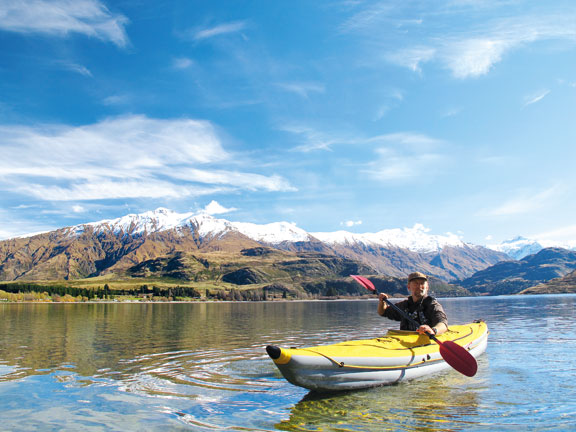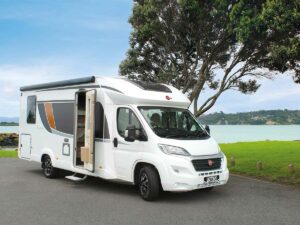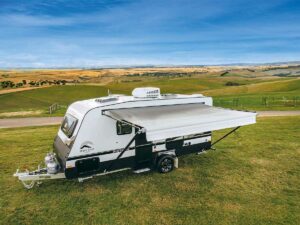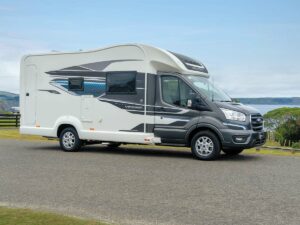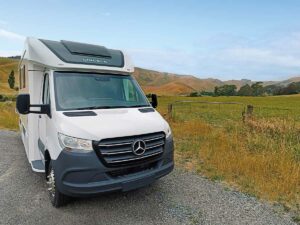Rafts, tenders and belly boats, sea kayaks, sit-ons and Canadian canoes – all now come in an inflatable form which packs down into a suitcase. Having a portable and easy-to-deploy watercraft has never been easier and it is no surprise that for many of us nomadic folk, they have become a do-not-leave-home-without addition to the list of tools and toys.
Modern inflatable boats are moderately priced: you can get an entry-level one for under $1000. They require next to no maintenance and take up little storage room, but once out and inflated, they open up a whole new layer of geography to explore: rivers and lakes, lagoons, estuaries, sheltered coastlines and, if you're more experienced and adventurous, the not-so-sheltered seaside as well. All of which begs the question, just which kind of inflatable boat should you buy?
Ready to upgrade my old rubber boat – big and unwieldy by the standard of latest inflatables, which can be backpacked around and taken into an aircraft as cabin baggage – I asked that big question at Incept Marine, a family business operating out of the small farming town of Taihape. Since 1989, Incept has been making an impressively full range of inflatable boats, from huge expedition-grade rafts ready for the Himalayan river network to kayaks and canoes for the sea, rivers and shallows, where the kids can safely splash about and play Titanic.
The company has made the name for itself the hard way: not by cutting corners, using off-shore labour and offering budget deals, but by innovation and quality. Its boats are still made in New Zealand and tested on local waters, like the Rangitikei, which has cut a deep and spectacular canyon through the papa country around Taihape.
Incept's watercraft may not be the cheapest around but as company owners the Booth family will tell you with home-grown pride, when you buy an Incept boat, you're buying the best there is.
“You ask which boat,” says Martin Straka, sales manager at Incept. “You really need to turn this question around and ask yourself what you want to do with it.”
Some soul searching is required. Do you mainly fish from the boat or do you want to play in whitewater – alone or with a partner or friends? Is the boat to be used mainly for day trips or for multi-day cruises? Do you need a performance vessel to handle any water anywhere or just something to float about on a sunny day and read?
“These are all critical questions to answer first,” Martin concludes, “because there is no one boat that can do it all. But whatever you want to do, we have the right boat for it.”
At the bottom end of the Incept range there are the Gumotex recreational sit-on kayaks, single and double, like Twist, Helios and Safari. Designed for lakes, bays and sheltered inshore waters, the Safari can also handle moderate whitewater and surf.
Among these models, the Twist single weighs only 6kg, packs next to nothing, takes minutes to inflate and, like the others, comes with a breakdown paddle. The Twist has an extremely stable hull, with comfortable back and footrests and secure cargo space for a dry-bag and gear. A kayak in a handbag? Well, not far from it. It is certainly the lightest inflatable kayak made of decent reinforced materials and all for around $1100.
Then there are inflatable sea kayaks, single and double, with which you can enact your own Happy Isles of Oceania, as Paul Theroux did years ago. The early inflatable sea kayaks used to have a wooden skeleton and a rubber skin which you put over the ribs and inflated, and I remember they were a nightmare to put up. Thankfully, the modern ones are simple 'roll out and inflate' jobs, but they are just as seaworthy, stable and hard-wearing as rigid-hull boats and a lot easier to handle. In fact, the Incept K40 Tasman and K50 Pacific tandem kayak can handle big seas and survive impacts which would break rigid hulls, Martin assures. They also eliminate the need for trailers or roof racks.
For motorhomers, this last point is a major advantage. I once helped to lower two plastic sea kayaks from the roof of my friend's 10m bus and it was a precarious and potentially painful exercise. Putting the wretched and unwieldy things back up was even worse, so the idea of being able to just deflate the kayaks, roll them up and put them into the ground-level cargo hold is extremely appealing.
My favourites in the Incept range of boats are the inflatable Canadian canoes – Whakapapa (two to three people) and Wanganui (three to four people) – which can comfortably handle moderate whitewater but also allow you to stretch your legs, fish and carry a lot of luggage (say, a deer you happen across on your dawn paddle). Both canoes feature an optional but ingenious outboard motor bracket, which mounts on the side and takes an engine up to 2hp.
Incept also makes tenders, a range of rafts in all sizes, boating accessories, like dry bags and pumps, and a customised fishing boat called Water Strider, which is a well thought-out combination of a belly boat and small raft. You can propel it with fins or oars or walk around wearing it if you come aground. This is an ideal vessel to fish shallow lakes like the Otomangakau or Aniwhenua, where a stealthy approach to the fish is essential.
And yet the Water Strider can handle fair grades of whitewater too. In 2007, a middle-aged Wanganui fly fisherman named Bill Grice took his Water Strider down the headwaters of the Rangitikei River in Kaimanawa Forest Park. In four days of rafting, he only flipped it twice.
New Zealand is a boat-lover's nation and apart from Incept, there are several other manufacturers of inflatable boats – like Aakron, Aquapro, Terminator, Euro, Quicksilver, Maxxon and Caribe – though I hope the brief review above gives you an idea of what's available on the market. Whichever you choose, an inflatable boat will add a whole new dimension to your RVing. I've come to carry mine by habit and prudence, in the same way I'd never drive anywhere without the spare wheel.
Feel free to make a comment or ask us a question about this story on the MCD  page.
For the latest reviews, subscribe to our Motorhomes, Caravans & Destinations magazine here.
page.
For the latest reviews, subscribe to our Motorhomes, Caravans & Destinations magazine here.
 page.
For the latest reviews, subscribe to our Motorhomes, Caravans & Destinations magazine here.
page.
For the latest reviews, subscribe to our Motorhomes, Caravans & Destinations magazine here. 
